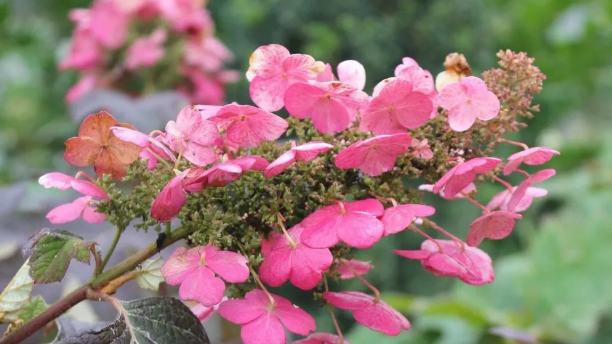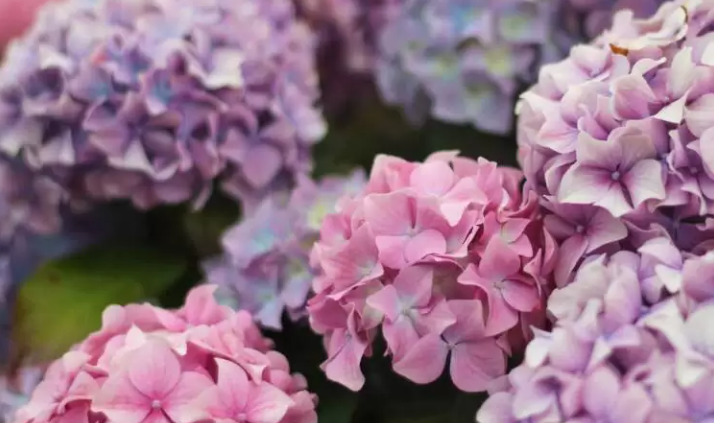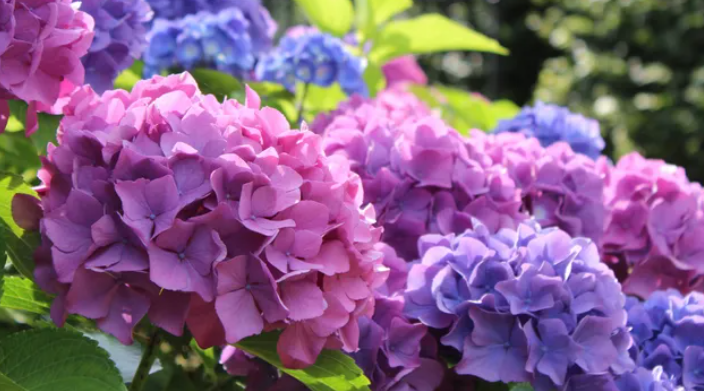Hydrangeas, beloved for their stunning leaves, blooms and diverse colors, are ornamental shrubs adored by gardeners worldwide. These beautiful flowers boast large, showy clusters known as "mopheads" or "lacecaps," and their color diversity often depends on soil pH.
Colors range from vibrant blues to pinks, purples, whites, and even greens. This color variety arises from the presence of aluminum ions in acidic soil, resulting in blue hues, while alkaline soil fosters pink or red blossoms. However, certain varieties maintain their color regardless of soil pH.
Caring for hydrangeas involves several essential tips. These shrubs thrive in well-draining soil with adequate moisture, preferring partial shade or morning sun with afternoon shade to avoid scorching. Regular watering is crucial, especially during dry periods, and mulching can help retain moisture.
Exploring the Vibrant Colors of Hydrangeas
Hydrangeas are renowned for their kaleidoscope of colors, captivating garden enthusiasts with their vibrant and diverse blooms. The color spectrum of these flowers is a mesmerizing display, often influenced by the pH levels of the soil in which they grow.
The most common colors of hydrangea blooms include shades of blue, pink, purple, white, and green. These colors are primarily determined by the presence of aluminum ions in the soil and the plant's ability to absorb them.
In acidic soil conditions with a lower pH level, hydrangeas tend to exhibit striking blue hues. The acidic environment enables the plant to absorb aluminum ions, which trigger the development of blue pigments in the flowers. Varieties like the Bigleaf (Hydrangea macrophylla) and Mountain (Hydrangea serrata) hydrangeas showcase this color transformation based on soil pH.
Conversely, in more alkaline soil with higher pH levels, the flowers lean towards shades of pink, red, or even purple. The alkaline environment restricts aluminum uptake by the plant, leading to a dominance of different pigments that manifest in these warmer tones.
Caring for Your Hydrangeas: Essential Tips and Techniques
Caring for hydrangeas involves understanding their needs and adapting care practices to different climates, ensuring adequate moisture, and employing appropriate pruning techniques for optimal blooming.
Planting Hydrangeas in Different Climates:
- Climate Consideration: Choose hydrangea varieties suited to your climate. For instance, bigleaf hydrangeas (Hydrangea macrophylla) thrive in temperate climates, while smooth hydrangeas (Hydrangea arborescens) are more adaptable to various conditions.
- Sun and Shade: In warmer climates, hydrangeas benefit from partial shade or morning sun and afternoon shade to prevent stress from excessive heat. In cooler regions, they might tolerate more sunlight.
- Soil Preparation: Ensure well-draining soil with organic matter. Consider mulching to retain moisture, especially in drier climates.
Watering and Moisture Control:
- Consistent Watering: Hydrangeas require consistent moisture, especially during their growing season. Water deeply but less frequently to encourage strong root development.
- Avoid Waterlogging: Prevent waterlogged soil, which can cause root rot. Adjust watering frequency based on weather conditions; hydrangeas may need more water during hot, dry spells.
- Mulching: Mulch around hydrangeas to maintain soil moisture and regulate soil temperature.
Pruning Techniques for Different Hydrangea Varieties:
- Pruning Time: Pruning time depends on the blooming cycle. For hydrangeas that bloom on old wood (last year's growth), prune right after flowering. These include many bigleaf and oakleaf hydrangeas.
- Bloom-on-New-Wood: Varieties that bloom on new wood can be pruned in late winter or early spring before new growth begins. Examples include smooth and panicle hydrangeas.
- Deadheading: Regularly remove spent flowers to encourage new growth and extend the blooming season.
- Specific Variety Pruning: Understand the specific needs of your hydrangea variety as some can tolerate more aggressive pruning while others require minimal intervention.
The Seasonal Journey of Hydrangeas: From Spring Blossoms to Winter Prep
Spring: Burst of Blooms
- Emergence: As temperatures rise, hydrangea buds start to swell and gradually unfold, revealing their spectacular blooms.
- Colorful Display: The shrubs burst into a colorful spectacle, showcasing their diverse blooms in hues of blue, pink, purple, white, and green.
- New Growth: Alongside the blossoms, fresh green foliage emerges, adding to the lushness of the plant.
Summer: Growth and Maintenance
- Blooming Continues: Many varieties continue to bloom throughout summer, enchanting gardens with their striking colors.
- Maintenance: Regular watering, mulching, and monitoring for pests or diseases are crucial during this active growth period.
- Pruning: For varieties that bloom on old wood, spring-blooming hydrangeas might require light pruning immediately after flowering to shape and encourage new growth.
Autumn: Changing Colors and Preparation
- Color Transitions: The colors of the blooms may transition as temperatures drop. Some hydrangeas deepen in color or take on shades of russet and bronze.
- Preparing for Dormancy: Hydrangeas start preparing for winter by slowing their growth and conserving energy. Leaves might change color, adding a touch of autumnal beauty to the garden.
- Late-Season Pruning: Late-blooming varieties can be pruned in late autumn or early winter, ensuring they're ready for their dormant phase.
Winter: Dormancy and Preparation
- Dormant Phase: Hydrangeas enter dormancy, shedding leaves and conserving energy for the colder months.
- Protective Measures: In colder climates, consider applying a layer of mulch around the base of the plant to protect the roots from freezing temperatures.
- Winter Pruning: Pruning for some varieties can be done in winter, removing dead or damaged wood while the plant is dormant.
Conclusion
Hydrangeas, with their kaleidoscope of colors and captivating lifecycle, embody nature's artistry in the garden. From the anticipation of spring's budding blooms to the vibrant display of summer hues, they paint landscapes with their beauty.
As these enchanting shrubs transition through the seasons, from the richness of autumn's changing colors to the dormancy of winter, they reveal resilience and grace. Their care demands attention to detail—providing the right conditions, nurturing growth, and preparing for the dormant phases.
Gardening with hydrangeas is a journey—a cycle of growth, bloom, rest, and rejuvenation. Understanding their needs, from planting to pruning, allows us to cultivate not just flowers but a connection with nature's rhythm.




